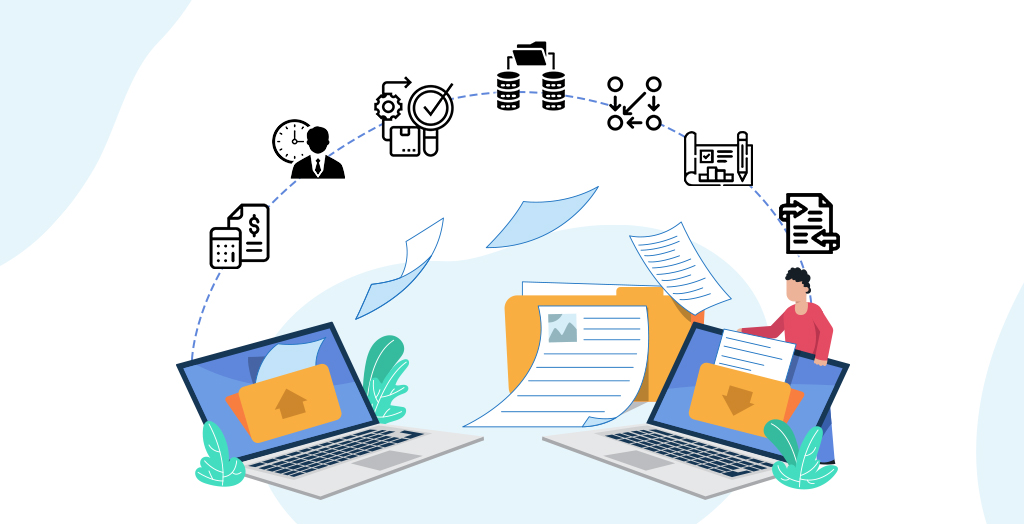Data migration is a vital process for businesses that want to leverage their data assets and optimize their data management. However, it is also a complex and challenging task that involves many risks and pitfalls. Therefore, if you are planning to move your data from one system or platform to another, you need a data migration strategy that can ensure a successful and smooth transition. In this article, we will provide you with a comprehensive guide on how to plan and execute a data migration strategy, following the best practices and tips.
What is Data Migration Strategy and Why Do You Need One?
1. Data migration strategy is a systematic process of transferring data from one system or platform to another, with minimal disruption and maximum efficiency.
2. Data migration strategy aims to improve the quality, performance, accessibility, security, and compliance of your data, as well as to support your business goals and objectives.
3. Data migration strategy is essential for businesses that want to:
- Upgrade or replace their existing systems or platforms
- Integrate or consolidate their data sources or systems
- Migrate or adopt cloud-based solutions or services
- Enhance or transform their data analytics or business intelligence capabilities
- Comply with regulatory or industry standards or requirements
4. Data migration strategy is not a simple or straightforward process. It requires careful planning and execution, as well as constant monitoring and evaluation.
5. Data migration strategy involves many challenges and risks, such as:
- Data loss, corruption, or duplication
- Data compatibility, format, or structure issues
- Data security, privacy, or integrity breaches
- Data performance, availability, or reliability problems
- Data migration cost, time, or resource overruns
- Data migration errors, failures, or impacts
How to Plan a Data Migration Strategy: Best Practices and Tips
Planning is the most important and critical phase of data migration strategy. It determines the scope, objectives, and requirements of your data migration project, as well as the method, tool, and team you will use to execute it. Moreover, planning also helps you design the data mapping, transformation, and validation rules, as well as the data migration plan and schedule. Besides, planning can help you avoid common pitfalls and ensure a smooth transition.
1. Define the scope, objectives, and requirements of the data migration project.
- Identify the purpose, goal, and expected outcome of your data migration project, as well as the scope and boundaries of the data sources and the target system.
- Define the functional and non-functional requirements of the data migration project, such as the data quality, performance, security, compliance, etc.
- Involve all the stakeholders and users in this process, and align your data migration project with your business strategy and vision.
2. Assess the current state and quality of the data sources and the target system.
- Conduct a thorough data audit and cleansing before the data migration.
- Analyze the data sources and the target system, and identify the data types, formats, structures, and dependencies of the data.
- Evaluate the data quality, accuracy, completeness, and consistency of the data, and identify and resolve any data issues or anomalies.
- Use a data profiling tool or a data quality tool to help you with this task.
3. Choose the appropriate data migration method, tool, and team.
- Select the data migration method that suits your data migration project, such as the big bang, the trickle, or the hybrid method.
- Choose the data migration tool that meets your needs and budget, such as the ETL (extract, transform, load), the ELT (extract, load, transform), or the ETLT (extract, transform, load, transform) tool.
- Compare the features, functions, and costs of different data migration tools, and test them before making a decision.
- Assemble the data migration team that has the skills, expertise, and experience to execute the data migration project.
- Assign clear roles and responsibilities to each team member, and provide them with adequate training and support.
4. Design the data mapping, transformation, and validation rules.
- Make data mapping rules to show how to map data from sources to fields in the target system.
- Make data transformation rules to show how to change data from sources to fit the target system’s requirements.
- Make data validation rules to show how to check data in the target system for quality and accuracy.
- Write and share the data mapping, transformation, and validation rules. Use a data mapping tool or a data transformation tool to help you.
5. Create a data migration plan and schedule, with milestones, tasks, roles, and responsibilities.
- Create a data migration plan and schedule that outline the steps, activities, and timelines of the data migration project.
- Set the milestones, tasks, roles, and responsibilities for each phase and stage of the data migration project.
- Document and communicate the data migration plan and schedule, and use a project management tool or a data migration tool to help you with this task.
6. Test the data migration plan and prepare for contingencies.
- Test the data migration plan and verify that it works as expected and meets the data migration objectives and requirements.
- Prepare for contingencies and backup plans in case of any data migration issues or errors.
- Perform a dry run and a pilot run before the final data migration, and use a data testing tool or a data migration tool to help you with this task.
How to Execute a Data Migration Strategy: A Step-by-Step Guide
Executing is the phase where you move your data to the target system. You follow the plan and schedule you made in the planning phase. In executing, you also monitor and troubleshoot the migration process and results. Moreover, you evaluate the migration performance, outcomes, and impacts. Executing can help you succeed and smooth your data migration.
1. Backup the data sources and the target system before the data migration.
- Backup the data sources and the target system before the data migration, to ensure that you have a copy of the original data in case of any data loss, corruption, or damage.
- Use a data backup tool or a data migration tool to help you with this task.
2. Extract the data from the data sources and transform it according to the data mapping and transformation rules.
- Extract the data from the data sources and transform it according to the data mapping and transformation rules you defined in the planning phase.
- Ensure that the data is compatible, consistent, and compliant with the target system.
- Use a data extraction tool or a data transformation tool to help you with this task.
3. Load the data into the target system and validate it according to the data validation rules.
- Load the data into the target system and validate it according to the data validation rules you defined in the planning phase.
- Ensure that the data is accurate, complete, and reliable in the target system.
- Use a data loading tool or a data validation tool to help you with this task.
4. Verify the data quality, accuracy, completeness, and consistency in the target system.
- Verify the data quality, accuracy, completeness, and consistency in the target system, and compare it with the data sources and the data migration objectives and requirements.
- Ensure that the data migration has achieved the expected outcome and result.
- Use a data verification tool or a data quality tool to help you with this task.
5. Resolve any issues or errors that arise during the data migration.
- Resolve any issues or errors that arise during the data migration, such as data loss, corruption, duplication, compatibility, format, structure, security, performance, availability, reliability, etc.
- Identify the root cause and the impact of the issues or errors, and take the appropriate actions to fix them.
- Use a data resolution tool or a data migration tool to help you with this task.
6. Evaluate the data migration performance, outcomes, and impacts.
- Evaluate the data migration performance, outcomes, and impacts, and measure them against the data migration objectives and requirements.
- Assess the efficiency, effectiveness, and satisfaction of the data migration process and result, and identify the benefits, challenges, and lessons learned.
- Use a data evaluation tool or a data migration tool to help you with this task.
7. Provide feedback and recommendations for future data migration projects.
- Provide feedback and recommendations for future data migration projects, based on your data migration experience and evaluation.
- Share your insights, best practices, tips, and suggestions for improving the data migration strategy and process, and for achieving better data migration results.
- Use a data feedback tool or a data migration tool to help you with this task.
Conclusion
Data migration strategy is a vital process for businesses that want to leverage their data assets and optimize their data management. However, it is also a complex and challenging task that involves many risks and pitfalls. Therefore, you need a data migration strategy that can ensure a successful and smooth transition. In this article, we have provided you with a comprehensive guide on how to plan and execute a data migration strategy, following the best practices and tips. We hope that this article has helped you understand what data migration strategy is, why you need one, and how to do it right.
If you need more information or assistance on data migration strategy, please contact us at OnextDigital. We are a leading provider of web development and white label software services. Additionally, we can help you with your data migration needs, as well as with your digital transformation and innovation goals. Not only that, we have the skills, expertise, and experience to deliver high-quality and cost-effective solutions for your business. Contact us today and let us help you move your data to the next level.






